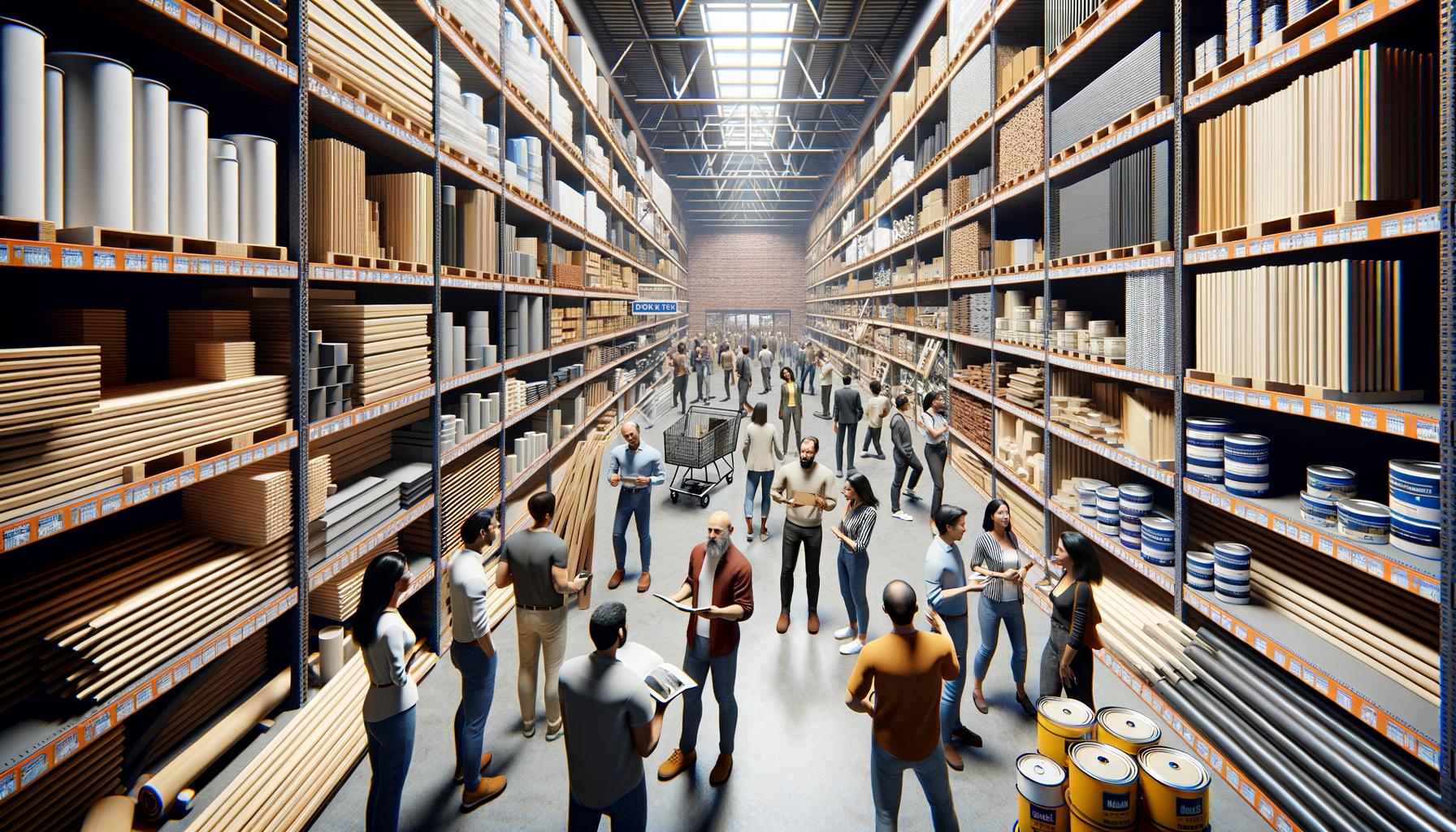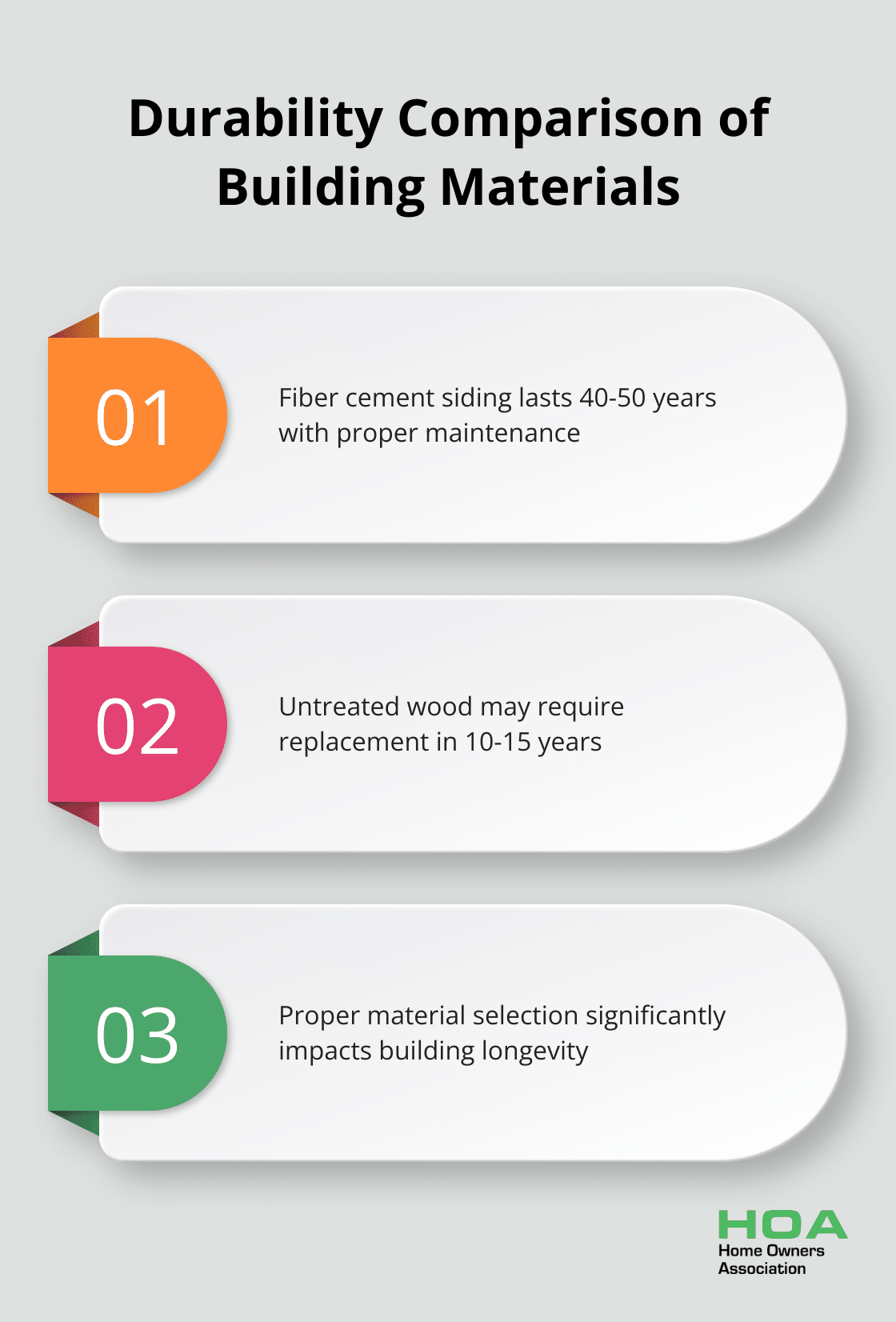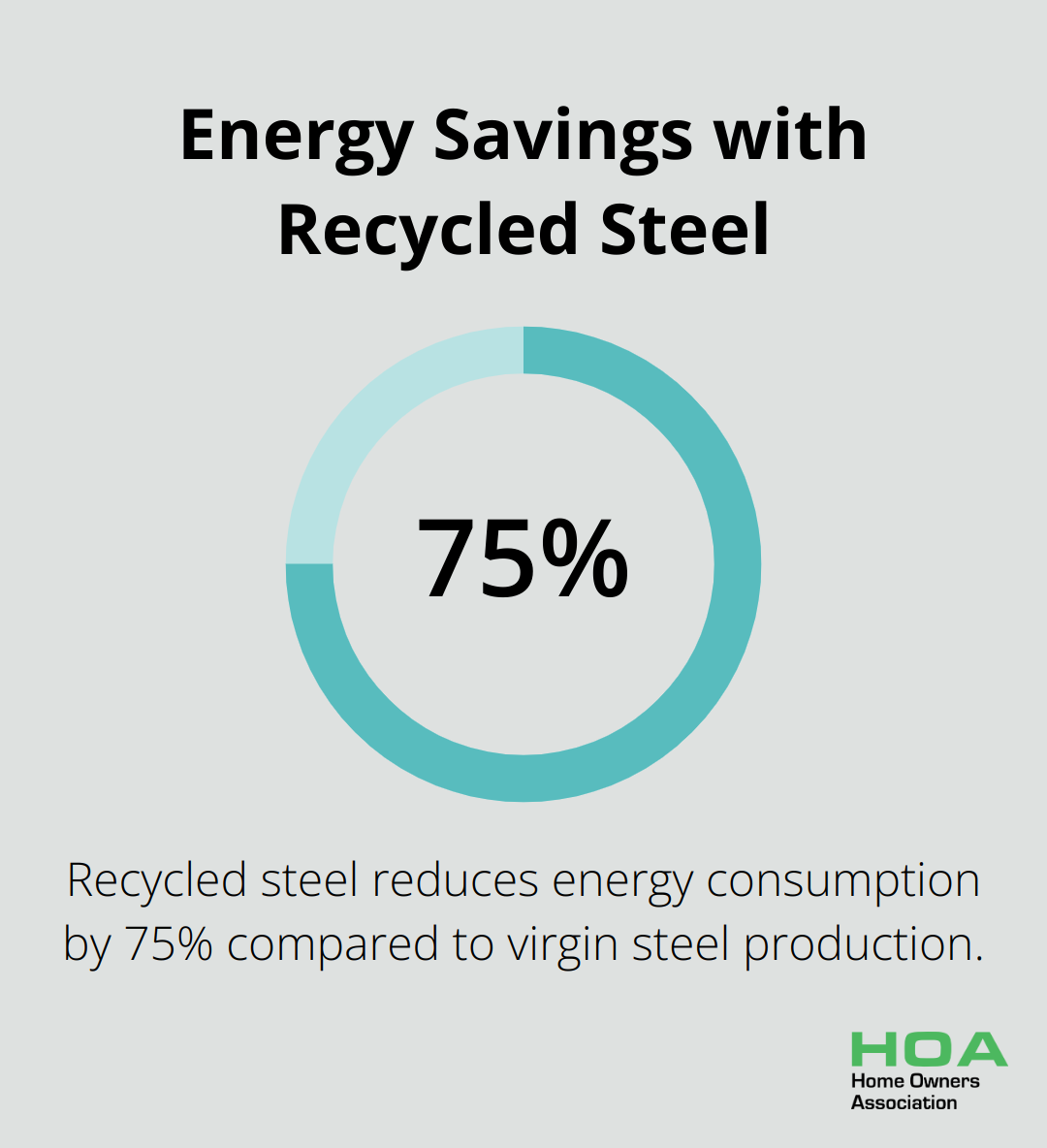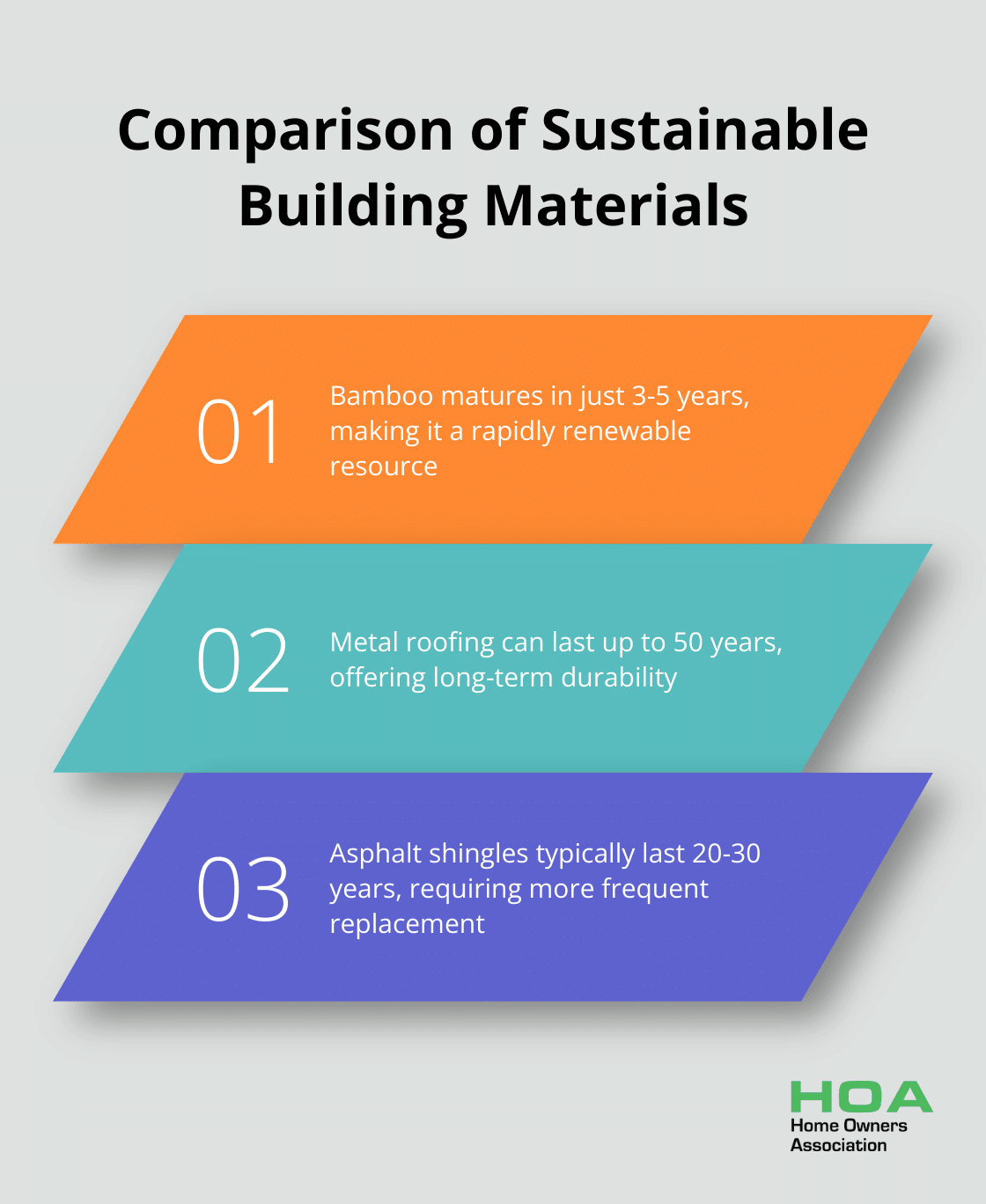
At Home Owners Association, we understand the importance of selecting the right building home materials for your project. The materials you choose can significantly impact your home’s durability, energy efficiency, and overall value.
In this blog post, we’ll explore the key factors to consider when selecting building materials and examine some popular options along with their pros and cons. We’ll also introduce you to innovative and sustainable alternatives that are shaping the future of home construction.
What Factors Matter Most When Choosing Building Materials?
Several key factors influence the selection of building materials for your home. These considerations can significantly impact the success of a construction project.
Durability and Weather Resistance
The longevity of your building materials is paramount. In Australia’s diverse climate, materials must withstand everything from intense heat to coastal salt spray. Fiber cement siding offers excellent durability against harsh weather conditions, lasting up to 40-50 years with proper maintenance. Untreated wood may require replacement in as little as 10-15 years in some environments.

Energy Efficiency and Insulation
Materials with high insulation properties can lead to substantial energy savings. Research findings consistently indicate that straw bale walls exhibit superior thermal performance compared to conventional concrete or brick walls. This translates to potential heating and cooling cost reductions compared to conventional construction methods.
Environmental Impact
Sustainable materials are increasingly important for environmentally conscious homeowners. Recycled steel uses 75% less energy to produce than virgin steel (according to the World Steel Association). Bamboo, which matures in just 3-5 years, offers a rapidly renewable alternative to traditional timber.

Cost Considerations
Initial costs are important, but it’s essential to consider long-term expenses. High-quality materials may have a higher upfront cost but can result in significant savings over time. Metal roofing, while more expensive initially, can last up to 50 years compared to asphalt shingles’ 20-30 year lifespan.
Local Climate Adaptation
Australia’s varied climate demands careful material selection. In coastal areas, salt-resistant materials like stainless steel and treated timber are essential. Inland regions may benefit more from materials with excellent thermal properties to combat temperature extremes.
The next chapter will explore popular building materials and their specific advantages and disadvantages, helping you make an informed decision for your construction project.
Which Building Materials Are Best for Your Home?
Selecting the right building materials for your home is a critical decision that impacts durability, efficiency, and overall value. Let’s explore some popular building materials and their unique characteristics to help you make an informed choice.
Concrete: The Versatile Powerhouse
Concrete remains a top choice for Australian homebuilders due to its unparalleled strength and versatility. Its ability to withstand extreme weather conditions makes it ideal for our diverse climate. Unlike plain concrete, which can last for centuries, reinforced concrete can succumb to rust, deteriorating in decades. This difference in longevity is important to consider when planning your construction.
Concrete’s high thermal mass can be both an advantage and a challenge. While it excels at temperature regulation in some climates, it may require additional insulation in others to maximize energy efficiency. We recommend you consult with a local expert to determine if concrete is the best choice for your specific location.
Timber: Natural Beauty Meets Sustainability
Timber has been a staple in Australian construction for centuries, and for good reason. Its natural insulation properties can contribute to energy efficiency in homes. Plus, responsibly sourced timber is a renewable resource, making it an environmentally friendly choice.
Successful timber construction depends on proper treatment and maintenance. While untreated timber may deteriorate quickly in harsh conditions, treated timber can last decades. For coastal areas, we suggest you opt for naturally resistant hardwoods like Jarrah or use appropriate protective coatings to combat salt spray and moisture.
Steel: Strength and Fire Resistance
Steel framing has gained popularity in recent years, especially in bushfire-prone areas. Its non-combustible nature provides an extra layer of safety for homeowners in high-risk zones. Steel-framed homes are known for their resilience against extreme weather events.
While the initial cost of steel may be higher than some alternatives, its durability and low maintenance requirements often result in long-term savings. Steel’s precision engineering also allows for faster construction times, potentially reducing labor costs.
Brick: Classic Appeal and Durability
Brick construction offers a timeless aesthetic and excellent durability. With proper construction, brick homes can last for centuries (as evidenced by many historic structures). Bricks provide natural insulation, helping to regulate indoor temperatures and reduce energy costs.
However, brick construction can be more labor-intensive and time-consuming compared to other materials. It’s also important to consider the weight of brick structures, which may require more substantial foundations.
The best building material for your home depends on various factors, including your location, budget, and personal preferences. Home Owners Association members benefit from exclusive discounts on a wide range of building materials, making quality construction more accessible. As we move forward, let’s explore some innovative and sustainable building materials that are shaping the future of home construction.
What Are the Latest Sustainable Building Materials?
The construction industry continues to evolve, with innovative and sustainable materials taking center stage. These new options reduce environmental impact and offer unique benefits for homeowners. Let’s explore some cutting-edge materials that reshape the way we build homes.
Recycled Steel and Aluminum: Strength Meets Sustainability
Using recycled steel in construction can reduce energy consumption by up to 75% compared to virgin steel production. This significant energy saving translates to a lower carbon footprint for your home.
Recycled aluminum also changes the game. When you select recycled metals for your home’s framework or roofing, you get a durable material and contribute to a circular economy.
Bamboo: Nature’s Fast-Growing Wonder
Bamboo gains traction as a sustainable alternative to traditional timber. This fast-growing grass reaches maturity in just 3-5 years (compared to decades for hardwoods). Its rapid growth rate makes it a highly renewable resource for flooring, structural elements, and even textiles.
Some bamboo species rival steel in tensile strength while remaining significantly lighter. This combination of strength and lightness makes bamboo an excellent choice for areas prone to earthquakes or high winds.

Hempcrete: Building with Carbon-Negative Materials
Hempcrete, a mixture of hemp hurds, lime, and water, makes waves in sustainable construction. This material absorbs more carbon dioxide than it produces and provides excellent insulation properties.
Hempcrete displays superior moisture-resisting capabilities compared to traditional insulating materials, providing excellent protection for roofs and ceilings.
Mycelium: The Future of Insulation
Mycelium (the root structure of fungi) emerges as a promising insulation material. Grown in molds, mycelium can take various forms and sizes, making it versatile for different insulation needs.
This organic material biodegrades, resists fire, and absorbs sound excellently. As research continues, we expect to see more applications of mycelium in home construction, offering a truly sustainable alternative to traditional insulation materials.
Recycled Plastic Building Blocks
Innovative companies now transform plastic waste into durable building blocks. These blocks keep plastic out of landfills and oceans and provide a cost-effective and resilient building material.
Recycled plastic blocks often interlock, which simplifies the construction process and reduces labor costs. They also resist weathering and pests, making them an excellent choice for long-lasting structures in various climates.
Final Thoughts
Selecting the right building home materials impacts your property’s longevity, efficiency, and value. Traditional options like concrete, wood, steel, and brick offer unique advantages, while innovative alternatives such as recycled metals, bamboo, and hempcrete present sustainable opportunities. The key to successful material selection lies in balancing performance, cost, and sustainability.
We recommend you explore these materials and consult with professionals to make informed decisions. Every construction project is unique, and expert guidance will help you navigate the complexities of material selection. At Home Owners Association, we support Melbourne homeowners through their construction journey with trade pricing and discounts on building materials.
The construction industry continues to evolve, and staying informed about new technologies and materials is essential. You can create a home that’s beautiful, functional, efficient, and sustainable for years to come (with careful consideration of your options). Leverage resources like those offered by Home Owners Association to make confident choices for your home.





